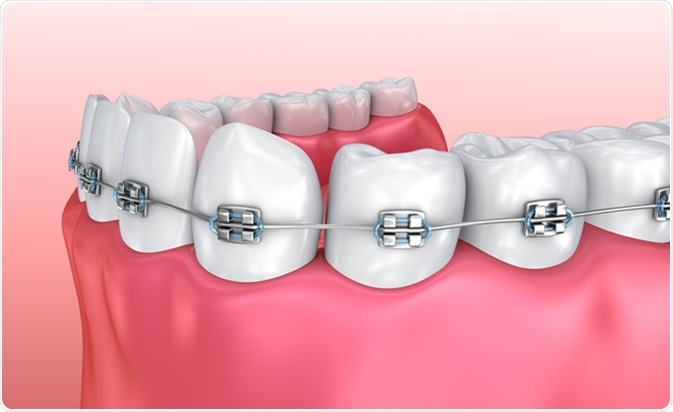Why Cumming Invisalign is the Perfect Selection for a Discreet Orthodontic Remedy
Why Cumming Invisalign is the Perfect Selection for a Discreet Orthodontic Remedy
Blog Article
Comprehensive Guide to Orthodontics Treatments for Correcting Oral Misalignments
Comprehending the ins and outs of each treatment, including their devices, advantages, and potential disadvantages, is vital in making educated choices concerning one's orthodontic therapy. As we browse through the detailed guide to orthodontic procedures for fixing dental misalignments, the elaborate details of each method will unfold, losing light on the course towards a harmonious and functional oral placement.
Orthodontic Procedures Review

Along with conventional braces and clear aligners, orthodontists might likewise recommend various other treatments like headgear, palatal expanders, or retainers to address certain positioning problems (cumming orthodontist). These procedures are tailored to each person's one-of-a-kind needs and might involve a mix of treatments to attain the preferred outcomes. Regular changes and monitoring are crucial components of orthodontic treatment to make sure progress gets on track and to make any kind of required modifications in the process. By going through orthodontic treatments, clients can not just attain a straighter smile however also enhance their total oral health and wellness and feature.
Traditional Braces: Exactly How They Work
When thinking about orthodontic treatments for dental misalignments, traditional braces stand out as a time-tested approach for remedying teeth positioning. Traditional dental braces contain braces, cables, and bands that interact to apply continuous stress on the teeth, slowly moving them right into the desired positioning. The brackets are affixed to the teeth utilizing a special adhesive, and the wires are threaded via the brackets. By adjusting the stress of the wires, orthodontists can regulate the direction and force used to each tooth, directing them right into appropriate alignment with time.
As pressure is used to the teeth via the dental braces, the bone surrounding the teeth is reshaped to support the brand-new tooth positions. Clients will require normal changes at the orthodontist's workplace to make sure the braces proceed to use the appropriate stress for reliable teeth activity.
Unnoticeable Aligners: Disadvantages and pros
Unseen aligners supply a discreet and practical option to typical dental braces for dealing with dental misalignments. These clear, tailor-made trays are essentially unseen when put on, making them an enticing alternative for people looking for a much more visually pleasing orthodontic treatment. One of the primary advantages of invisible aligners is their removability, enabling less complicated upkeep of dental health compared to conventional braces. Individuals can get rid of the aligners prior to eating or brushing their teeth, reducing the risk of food obtaining embeded the device and streamlining the cleaning process.

Surgical Orthodontic Options
Surgical treatments cosmetic dentistry porcelain veneers in orthodontics existing viable alternatives for resolving complex dental misalignments that might not be effectively solved via conventional orthodontic treatments. While typical braces and unnoticeable aligners can remedy lots of orthodontic concerns, particular instances need medical treatment to attain optimum outcomes. Surgical orthodontic choices are commonly advised for serious malocclusions, substantial jaw inconsistencies, and situations where the underlying bone structure needs modification to achieve proper placement.
One usual medical orthodontic treatment is orthognathic surgical treatment, which includes repositioning the jaws to correct useful concerns such as problem chewing or speaking. This surgery is frequently performed in cooperation with an orthodontist that assists straighten the teeth prior to and after the procedure. Surgical orthodontics may additionally include procedures to reveal affected teeth, get rid of excess periodontal tissue, or improve the jawbone to produce a much more harmonious face profile.
Before taking into consideration surgical orthodontic choices, patients undergo an extensive evaluation to determine the necessity and possible benefits of such treatments. invisalign. While surgery might seem daunting, it can significantly enhance both the function and appearances of the smile in situations where conventional orthodontic my link treatments drop short
Retainers and Post-Treatment Care

Failing to conform with post-treatment treatment directions can result in relapse, where the teeth progressively move back towards their original placements. Regular retainer wear, great dental hygiene, and normal dental check-ups are necessary for keeping the outcomes attained via orthodontic surgical procedure and ensuring the long-term stability of the remedied dental positioning.
Conclusion
In verdict, orthodontic procedures offer numerous alternatives for fixing oral imbalances. Surgical orthodontic options are readily available for a lot more severe imbalances. Overall, orthodontic treatments can successfully improve oral health and visual appearance.
As we browse through the thorough overview to orthodontic treatments for remedying dental imbalances, the elaborate information of each technique will certainly unfold, shedding light on the course toward a functional and unified dental positioning. - cumming braces
One of the most common orthodontic treatments is the usage additional hints of dental braces, which consist of steel braces and wires that use mild pressure to gradually move teeth right into the desired setting.When considering orthodontic treatments for oral imbalances, traditional braces stand out as a reliable technique for remedying teeth placing. Additionally, unseen aligners might not be suitable for complicated orthodontic concerns that call for even more significant teeth motion, as they are commonly recommended for mild to moderate situations. Retainers are personalized orthodontic devices developed to hold teeth in their dealt with placements after the conclusion of orthodontic treatment.
Report this page